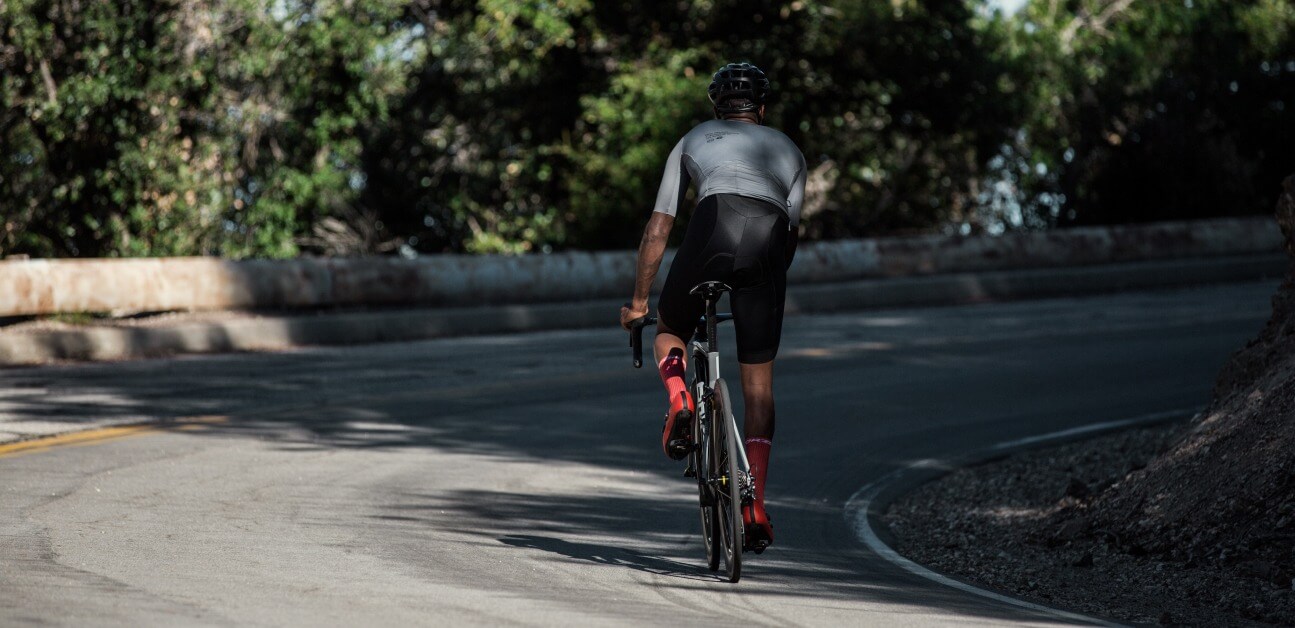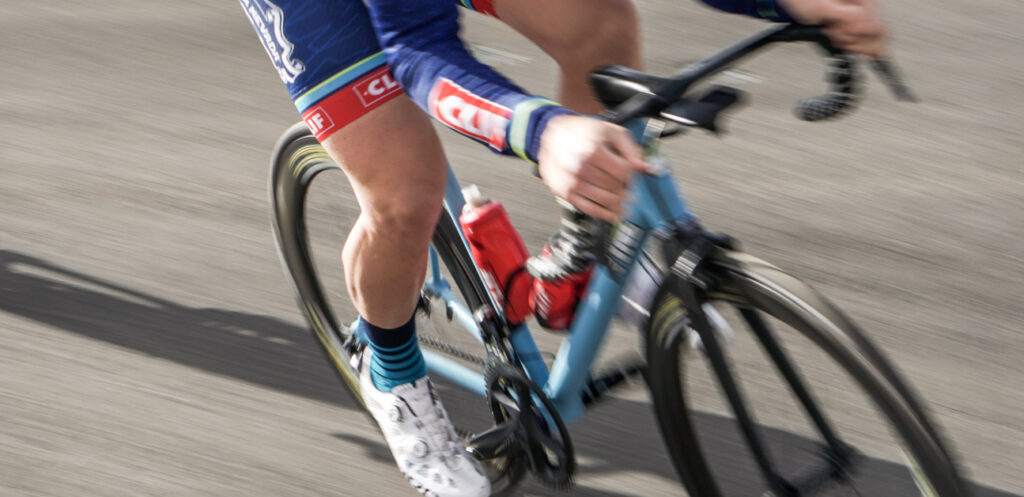Masters Cycling: Training Advice for Masters Athletes

The gradual toll of aging is an inescapable fact of life. But like a fine wine, many endurance athletes continue to improve their fitness and health even as the years pass by. What physiological changes do masters cyclists experience, and how can you use smart training and recovery strategies to get faster, no matter your age?
What is Masters Cycling?
Masters cycling is bike racing organized by age group, generally open to athletes 35 years or older. Because most masters athletes have day jobs, families, and external obligations, masters races tend to be safer and less chaotic than category-based racing. That’s not to say that masters races aren’t fast, challenging, or hotly contested—in fact, masters races are some of the most exciting and impressive of all amateur cycling events.
And while lots of masters athletes are experienced competitors, the term doesn’t exclusively apply to racers. Many masters cyclists are comparative newcomers to the sport, drawn to the camaraderie, challenge, and health benefits of riding a bike with no intention of organized competition.
Masters Cycling Age Categories
In masters races, athletes compete against their peers in 5- or 10-year age brackets. In some events, multiple age groups start together but are scored separately, while in other cases each masters field starts and races independently of one another. Masters races are generally not open to current professional athletes, even if they are of eligible age.
The majority of masters races start with a 35+ division, but some are open to athletes as young as 30+, while others may start with a 40+ field. Small local races generally offer fewer separate masters races and are more likely to group competitors in larger age ranges, or even combine masters fields with category races. Larger races and national championships usually keep masters fields separate and divide races by narrower age ranges, but some races with low entries may still be combined.
For example, the 2021 USA Cycling Masters Road National Championships offered races in the following age ranges for the men’s criterium: 35-39, 40-44, 45-49, 50-54, 55-59, 60-64, 65-69, and a combined 70-74/75-79/80+ race in which each age bracket was scored separately. The women’s criterium was offered in most of the same categories, but all racers above age 55 started together.
Adaptive Training
Get the right workout, every time with training that adapts to you.
Check Out TrainerRoadMasters Cycling Training
Every athlete deals with physiological changes over time, and athletic capacity naturally declines as we get older. But apart from professional cyclists, almost none of us have reached our full potential as athletes, leaving us plenty of room left to improve. By understanding and addressing the changes that occur with aging, masters athletes can continue to and get faster and healthier overall—well into their 40s, 50s, and beyond.
Following a Training Plan
Structured training is the most effective way to improve your cycling at any age. But for masters athletes, structured training is even more essential, because it directly targets one of aging’s main effects on the body.
The body’s capacity to utilize oxygen is called VO2 max, and it’s a major determinant of athletic performance. VO2 max begins to modestly decrease around age 35 before falling more dramatically after age 50 or 60. Studies suggest this is the main cause of reduced performance in older cyclists, but the good news is that VO2 max responds to training. In fact, some evidence suggests that the decline in VO2 max in older athletes has as much to do with a reduction in training volume and intensity as it does with natural aging. The high-intensity workouts included in a structured training plan or suggested by TrainNow can help mitigate this decline, improving aerobic capacity for athletes of any age.
Strength Training
Strength training is beneficial for all cyclists, promoting bone and muscle health, injury resistance, and pedaling efficiency. But it’s even more important for masters athletes because the body naturally tends to lose muscle mass as we get older.
This reduction in muscle is known as sarcopenia. It primarily affects type II muscle fibers, crucial for high-intensity sprint and anaerobic efforts. Like declines in VO2 max, it’s likely to be partially related to overall reductions in activity and training intensity as we get older; age-related changes in hormones and neuromuscular function also probably play a role. Whatever the cause, studies show athletes who weight train preserve much more lean muscle mass than those who don’t. Weight training also helps prevent declines in bone density, which can lead to injury.
The older we get, the more important and impactful the beneficial effects of strength training, and it’s never too late to begin. For hints on how to get started, click here.
Recovery
One of the most commonly mentioned differences between masters and young cyclists is an increased need for recovery. It’s unclear why this is—some studies suggest it may be largely related to perception of effort. Other research hints it may be hormonal, the residual effects of past injuries, or related to poor nutrition in older athletes. It might even have something to do with external stress, as masters athletes are more likely to have demanding jobs and family responsibilities than younger riders.
Whatever the cause, it’s a real factor for masters cyclists, and it’s important to cut your body some slack and give it the time that it needs. It’s far too easy to normalize a feeling of constant exhaustion, especially for experienced athletes used to pushing their bodies hard. Don’t fall into the trap of mistaking fatigue for fitness— masters athletes in particular need to be especially aware of the signs of overdoing it. Play the long game and operate under the principle of minimum effective dose, and if your body needs a day off or an occasional reduction in workout intensity, give it what it needs. The consistency, quality, and overall effectiveness of your training is likely to improve as a result.
Adaptive Training For Masters Athletes
Masters cyclists are incredibly diverse, with widely varying needs. A 35-year old rider’s ideal training won’t be the same as that of a 60-year old, and even two athletes of the same age may respond differently to the same workouts.
Adaptive Training is designed to address every athlete’s individual needs. No matter your age or experience level, Adaptive Training responds to your unique needs and abilities and customizes your training every day to help you reach your goals. It’s the ideal solution for masters athletes in search of an optimized approach. Adaptive Training is coming soon in open beta for all athletes. Learn more at www.TrainerRoad.com/AT.
Training Tips for Masters Cyclists
- Accept that changes happen as you get older. Effective training as a masters athlete starts with admitting that none of us are immune to aging’s effects. But this doesn’t mean you have to resign yourself to getting slower any time soon—in fact, most masters cyclists have plenty of room to keep getting faster.
- Let yourself recover. Masters athletes generally need more recovery time than younger cyclists. Give your body the extra time it needs, so your training can be higher-quality and more effective overall.
- Strength train. The decrease in muscle mass and bone density experienced by older athletes doesn’t just make you slower—it can negatively impact your overall quality of life. Make yourself both faster and healthier with regular visits to the weight room.
- Pay extra attention to nutrition. Studies have shown masters athletes consume less carbohydrate and protein than younger athletes. While the body may naturally respond more slowly to training with age, good nutrition both during and post-workout can have a profound impact from day to day.
- Don’t eliminate intensity. Age-related declines in VO2 max can be reduced or counteracted with high-intensity training, but older athletes often skip these sessions. Though every workout definitely shouldn’t be hard, masters athletes should absolutely still train at high intensity, as long as they allow themselves ample time to recover.
- Play the long game. Cycling is a life-long pursuit with profound benefits for overall health and well-being. But it can be all too easy to chase quick improvements in fitness in the name of race results or bragging rights. This can lead to burnout, and masters athletes, in particular, should favor consistency and building fitness slowly and sustainably over time. Your performance and well-being both on- and off-bike will benefit as a result, potentially for years to come.
References/ Further Reading
Doering, Thomas M et al. “The Effect of Higher Than Recommended Protein Feedings Post-Exercise on Recovery Following Downhill Running in Masters Triathletes.” International journal of sport nutrition and exercise metabolism vol. 27,1 (2017): 76-82. doi:10.1123/ijsnem.2016-0079
Foster, Carl et al. “Training in the Aging Athlete.” Current Sports Medicine Reports: June 2007 – Volume 6 – Issue 3 – p 200-206 doi: 10.1097/01.CSMR.0000306468.72466.af
Pollock, M L et al. “Twenty-year follow-up of aerobic power and body composition of older track athletes.” Journal of applied physiology (Bethesda, Md. : 1985) vol. 82,5 (1997): 1508-16. doi:10.1152/jappl.1997.82.5.1508
Tanaka, Hirofumi, and Douglas R Seals. “Endurance exercise performance in Masters athletes: age-associated changes and underlying physiological mechanisms.” The Journal of physiology vol. 586,1 (2008): 55-63. doi:10.1113/jphysiol.2007.141879
Tanaka, Hirofumi, and Douglas R Seals. “Invited Review: Dynamic exercise performance in Masters athletes: insight into the effects of primary human aging on physiological functional capacity.” Journal of applied physiology (Bethesda, Md. : 1985) vol. 95,5 (2003): 2152-62.
Tanganelli, Fet al. ” Type-2 muscle fiber atrophy is associated with sarcopenia in elderly men with hip fracture.“ Experimental Gerontology vol 144 (2021). doi:10.1016/j.exger.2020.111171
Tayrose, Gregory A et al. “The Masters Athlete: A Review of Current Exercise and Treatment Recommendations.” Sports health vol. 7,3 (2015): 270-6. doi:10.1177/1941738114548999
